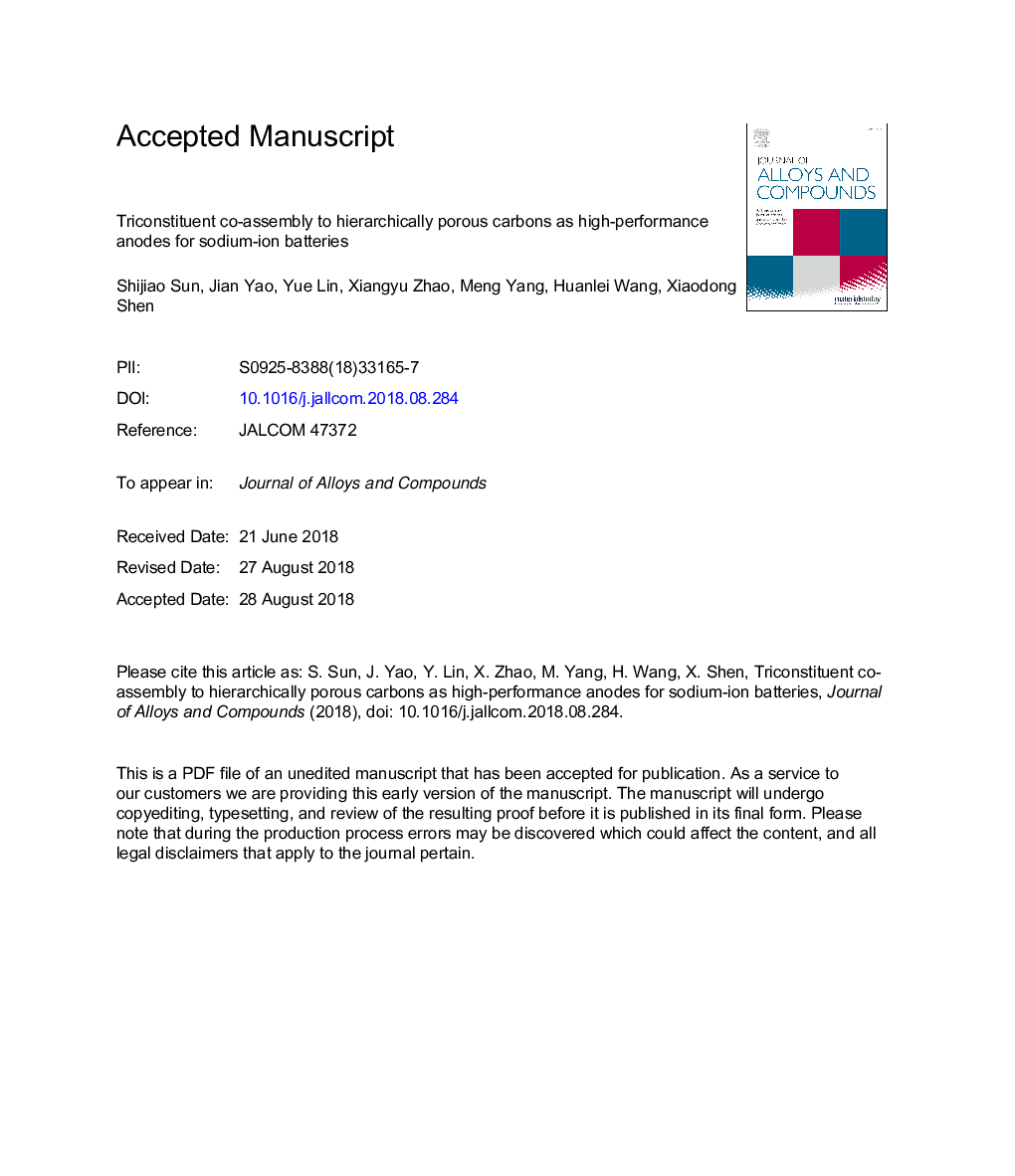| Article ID | Journal | Published Year | Pages | File Type |
|---|---|---|---|---|
| 8955459 | Journal of Alloys and Compounds | 2019 | 30 Pages |
Abstract
Hierarchically porous carbons were prepared through triconstituent co-assembly of resols, oligomer silicates from tetraethyl orthosilicate (TEOS) and triblock copolymer F127 template, followed by carbonization and removal of silica. The as-prepared carbons possess abundant micropores and two kinds of mesopore with sizes of 3.7 and 6.3â¯nm. Upon the electrochemical testing against sodium, the hierarchically porous carbon electrodes exhibit sloping voltage profile during the first charge and subsequent cycles with superior electrochemical performance, delivering a reversible capacity of 180â¯mAh gâ1 at 0.1â¯Aâ¯gâ1 after 200 cycles, which is much higher than 120â¯mAh gâ1 of the hierarchically porous carbon electrode without the addition of TEOS during the synthesis. The improved electrochemical performance may be ascribed to the combined contribution from the finer graphitic domain, higher degree of structural disorder, more abundant surface functional groups and most importantly, interconnected hierarchically mesoporous structure.
Keywords
Related Topics
Physical Sciences and Engineering
Materials Science
Metals and Alloys
Authors
Shijiao Sun, Jian Yao, Yue Lin, Xiangyu Zhao, Meng Yang, Huanlei Wang, Xiaodong Shen,
